In evaluating the quality of a $100 dollar telescope, there are several important factors to consider. While the price point may imply limitations, it does not necessarily equate to compromised performance. This article explores the capabilities and potential drawbacks of such telescopes, showcasing the balance between affordability and functionality that can be achieved within this budget. By examining the key features and customer reviews, readers will gain insights into the value and overall quality of a $100 dollar telescope.
Table of Contents
The Quality of a $100 Dollar Telescope
Optical Quality
A crucial factor to consider when evaluating the performance of a telescope is its optical quality. The lens or mirror quality significantly impacts the clarity and sharpness of the images produced. In the case of a $100 dollar telescope, one should not expect the highest level of optical quality, as more expensive telescopes often incorporate superior materials and precision craftsmanship to achieve optimal results.
Lens or Mirror Quality
The primary optical component of a telescope is either a lens or a mirror. Refractor telescopes utilize lenses, while reflector telescopes employ mirrors. In the case of a $100 dollar telescope, the lens or mirror quality may be satisfactory for casual observation purposes. However, due to budget constraints, the optical elements may not possess the same level of precision and high-index glass materials found in more expensive telescopes. As a result, the overall image quality may be slightly compromised.
Aperture Size
The aperture size of a telescope, referring to the diameter of its primary lens or mirror, directly impacts its light-gathering capability and resolution. A larger aperture allows more light to enter the instrument, facilitating the observation of fainter celestial objects and enhancing the level of detail visible. However, in the realm of $100 dollar telescopes, compromises must be made to keep costs down. Therefore, it is common for telescopes in this price range to have smaller apertures, limiting their ability to gather sufficient light and diminishing the potential for detailed observations of distant objects.
Focal Length
The focal length of a telescope determines its magnification potential and field of view. A longer focal length generally results in higher magnification but narrows the field of view, making it more suitable for observing objects in greater detail. Conversely, a shorter focal length provides a wider field of view but reduces the potential for high magnification. In the case of a $100 dollar telescope, the focal length may be modest, making it suitable for observing larger celestial objects such as the Moon or planets. However, intricate details and distant objects may not be easily discernible due to the limitations of the equipment.
Maksutov-Cassegrain or Refractor
When considering a $100 dollar telescope, it is important to evaluate the type of telescope being offered. Two common options in this price range are Maksutov-Cassegrain and refractor telescopes. Maksutov-Cassegrain telescopes offer a compact design and portability, making them suitable for entry-level astronomy enthusiasts. They utilize both lenses and mirrors to deliver impressive image quality within their price range. Refractor telescopes, on the other hand, have a more traditional design and use lenses exclusively. While refractors may not offer the same optical quality as Maksutov-Cassegrain telescopes at this price point, they can still provide enjoyable astronomical experiences for beginners.
Mount and Stability
The mount and stability of a telescope play a crucial role in facilitating smooth and steady observations. A stable mount ensures minimal vibration and movement, allowing for precise tracking and prolonged viewing sessions without excessive image shake.
Tripod Stability
The stability of the tripod on which the telescope is mounted is of utmost importance. A sturdy tripod with adjustable legs and a rigid central column can enhance stability and minimize vibrations caused by wind or accidental bumps. A $100 dollar telescope may come with a tripod that is adequate for basic observation but may lack some of the refinements and build quality found in more expensive models. Some tripod designs in this price range may be susceptible to slight wobbling or instability, which could impact the overall viewing experience.
Altitude-Azimuth vs. Equatorial Mount
Telescopes are typically mounted either on an altitude-azimuth (Alt-Az) or an equatorial mount. Alt-Az mounts allow for simple up-and-down (altitude) and side-to-side (azimuth) movements, making them easier to use for beginners. Equatorial mounts, alternatively, are aligned with the Earth’s rotation axis and enable more accurate tracking of celestial objects. While equatorial mounts provide superior tracking capabilities, they require a steeper learning curve for proper alignment. $100 dollar telescopes often come with Alt-Az mounts, offering simplicity and ease of use, albeit at the cost of precise tracking over extended periods.
Tracking Mechanism
The tracking mechanism of a telescope is responsible for compensating for the Earth’s rotation and ensuring that celestial objects remain in the field of view for extended observations. Advanced telescopes incorporate motorized tracking systems that automatically compensate for the Earth’s movement. However, in the case of a $100 dollar telescope, such advanced tracking mechanisms may be absent to keep costs down. Manual tracking, achieved by manually adjusting the telescope’s position as the target object moves across the sky, is more commonly employed in telescopes in this price range.
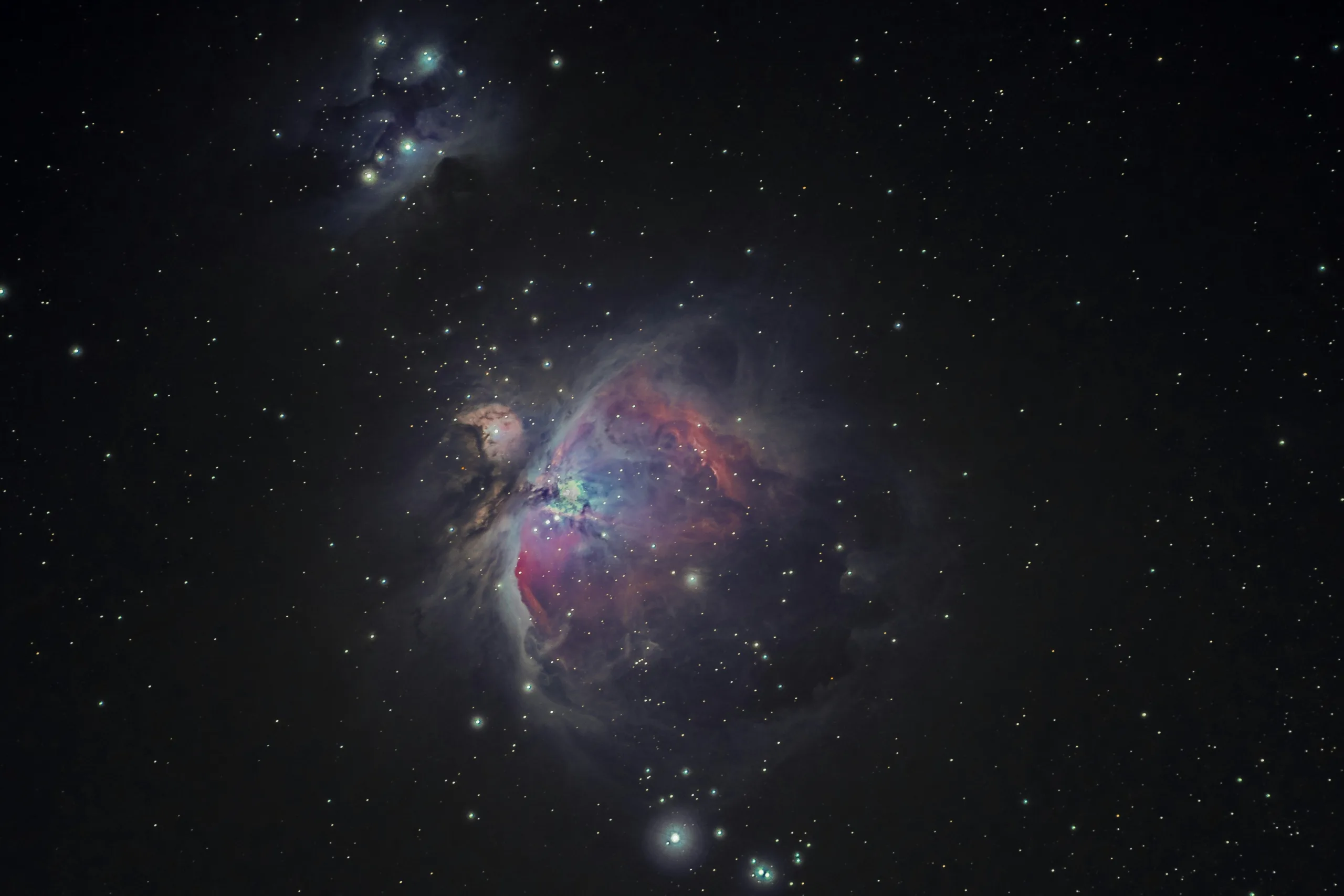
Eyepieces and Magnification
Eyepieces and magnification contribute significantly to the observing experience, dictating the level of detail and the field of view visible through the telescope.
Included Eyepieces
The eyepieces included with a $100 dollar telescope play a crucial role in determining the available magnification levels and the field of view provided. While these telescopes may come with a limited number of eyepieces, they are often designed to provide different magnification options. It is essential to choose eyepieces that suit the observer’s preferences and desired level of detail. However, it is worth noting that the eyepieces included with $100 dollar telescopes may not offer the same level of optical quality as higher-end alternatives, potentially impacting the sharpness and clarity of the observed image.
Barlow Lens
A Barlow lens is an accessory used to increase the effective focal length of a telescope and achieve higher levels of magnification. By inserting a Barlow lens between the eyepiece and the telescope’s focus mechanism, the user can effectively double or triple the magnification power of the telescope. While some $100 dollar telescopes may include a basic Barlow lens, it is important to consider its quality and performance. Inexpensive Barlow lenses may introduce optical aberrations and reduce image quality, which can compromise the viewing experience.
Maximum Useful Magnification
The maximum useful magnification of a telescope largely depends on its design, optical quality, and atmospheric conditions. Higher magnification can be achieved with longer focal lengths and larger apertures. However, it is crucial to keep in mind that magnifications beyond a certain threshold may not yield improved results due to atmospheric turbulence, optical limitations, and low-light sensitivity. In the case of a $100 dollar telescope, the maximum useful magnification may be limited compared to more expensive models. This limitation may restrict the observer’s ability to examine fine details and faint objects.
Focusing Mechanism
The focusing mechanism of a telescope allows the observer to adjust the position of the primary lens or mirror, ensuring a sharp and clear image.
Rack-and-Pinion Focuser
Rack-and-pinion focusers are commonly found in low to mid-range telescopes, offering a straightforward and reliable focusing mechanism. With this design, a gear system is employed to move the eyepiece in and out, achieving precise control over the focal plane. While rack-and-pinion focusers provide an adequate focusing experience, their performance may not match the smoothness and precision of more expensive dual-speed or Crayford focusers.
Crayford Focuser
Crayford focusers are considered an upgrade over rack-and-pinion focusers due to their enhanced precision and smoothness of operation. This design utilizes a roller-bearing mechanism and a linear track to achieve accurate and effortless focusing. However, Crayford focusers are typically found in more expensive telescopes and may not be commonly featured in $100 dollar telescopes. Therefore, observers purchasing telescopes in this price range should not expect the advantages of a Crayford focuser.
Dual-Speed Focuser
Dual-speed focusers provide a greater degree of fine-tuning and focusing control, particularly when observing objects with intricate details. This type of focuser incorporates two focusing knobs, one for coarse adjustments and another for fine adjustments. The presence of a dual-speed focuser allows for smoother and more precise focusing, enhancing the overall viewing experience. However, in the realm of $100 dollar telescopes, it is less common to find dual-speed focusers due to their higher production costs. Thus, observers should be prepared for manual and single-speed focusing mechanisms that may lack the finer adjustments of higher-end models.
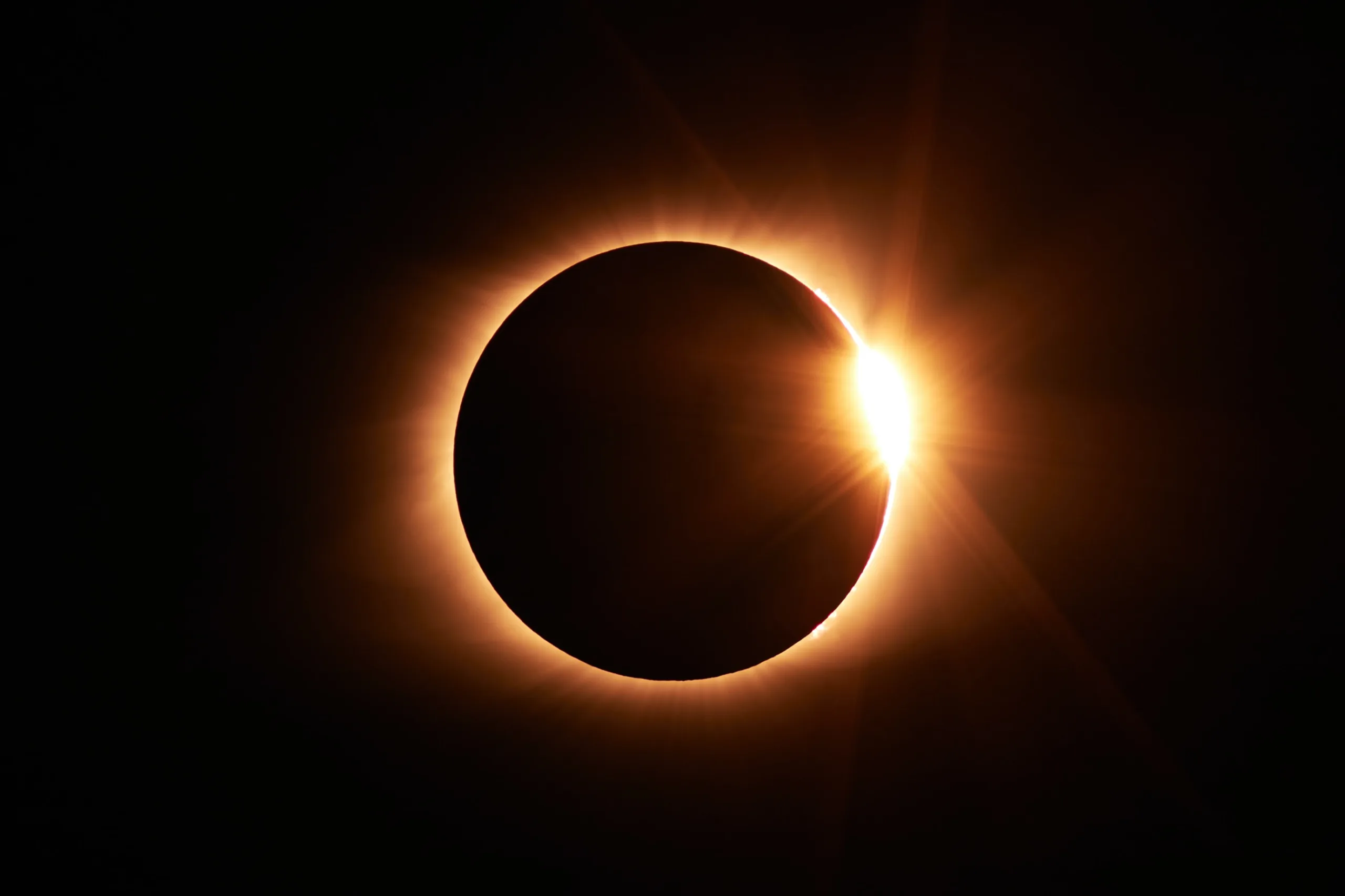
Collimation
Collimation refers to the alignment of all the optical components of a telescope, ensuring that the light path is properly centered and focused. Accurate collimation is essential for optimal image quality and clarity.
Ease of Collimation
The ease of collimation can greatly impact the user experience, especially for beginners. High-end telescopes often offer convenient collimation mechanisms and tools, allowing for quick and precise alignment. However, $100 dollar telescopes may provide limited collimation features. While some models may have straightforward collimation procedures, others may require more intricate adjustments that could prove challenging for novice astronomers. Potential buyers should consider their comfort level with collimation and the specific collimation requirements of the telescope they are interested in.
Collimation Tools
Collimation tools are used to align the optical elements of a telescope accurately. Common tools include a collimation cap, a Cheshire eyepiece, or a laser collimator. These tools aid in adjusting the telescope’s secondary mirrors, primary mirrors, or lenses, ensuring optimal alignment. In the case of a $100 dollar telescope, the availability and quality of collimation tools may vary. Some models may include basic collimation aids, while others might require the purchase of additional tools separately. As collimation is essential for image quality, it is important to consider the range and quality of collimation tools provided or accessible for a $100 dollar telescope.
Portability
The portability of a telescope determines how easily it can be transported, assembled, and disassembled for observing sessions in different locations.
Size and Weight
The size and weight of a telescope directly affect its portability. $100 dollar telescopes often prioritize affordability over compactness, resulting in larger and bulkier designs. While this may slightly hinder the portability of these telescopes, it does not render them completely immobile. Many $100 dollar telescopes offer collapsible or detachable components, such as tripod legs or tube sections, to facilitate transportation and storage. However, users should be aware that these telescopes may require a bit more effort to move compared to lightweight and compact alternatives.
Ease of Assembly and Disassembly
The ease of assembly and disassembly is an important factor to consider when evaluating a telescope’s portability. $100 dollar telescopes generally aim to provide a user-friendly setup process. They often come with clear instructions and minimal components, allowing even beginners to assemble the telescope quickly. Similarly, disassembly is usually straightforward, enabling users to pack and store the telescope without much hassle. While a $100 dollar telescope may not offer the same level of convenience as higher-end models, they still provide reasonable ease of assembly and disassembly.
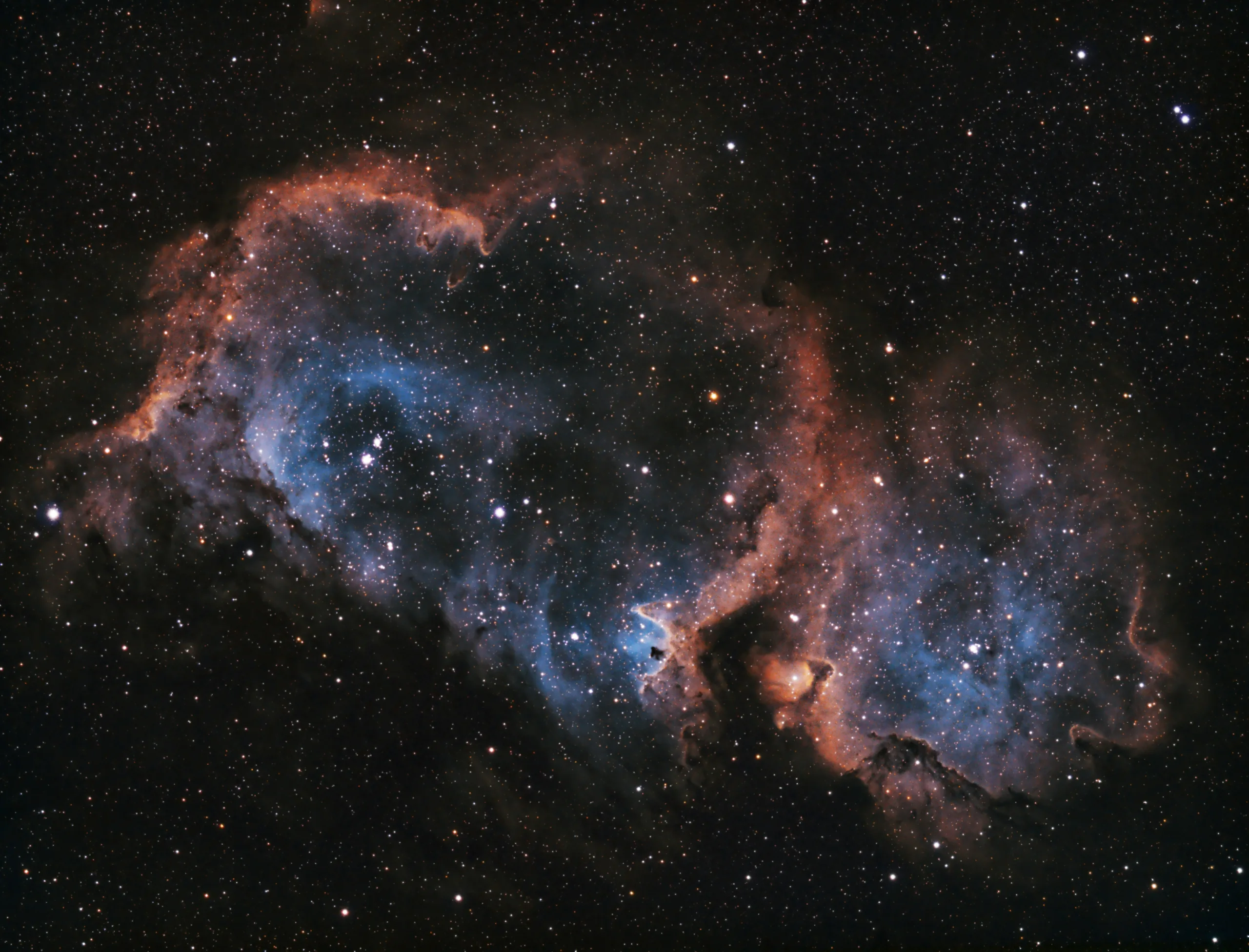
Accessories and Extras
Accessories and extras can enhance the versatility and functionality of a telescope, offering additional features and capabilities beyond the basic observing functions.
Finderscope
A finderscope is a small, low-power telescope or aiming device attached to the primary telescope. Its purpose is to provide a wide field of view, aiding the observer in locating celestial objects before viewing them with higher magnification. While some $100 dollar telescopes may include a basic finderscope, others may require the purchase of one separately. The quality and effectiveness of the included finderscope should be evaluated, as a reliable and accurate finderscope can significantly enhance the observing experience.
Diagonal
A diagonal is an accessory that allows for comfortable viewing by angling the eyepiece, redirecting the light path to a more convenient position. This is particularly useful when observing objects at high altitudes or when using the telescope for terrestrial viewing. While a diagonal is not always provided with a $100 dollar telescope, it can be a valuable addition that improves the ergonomics of the telescope. The quality and durability of the included diagonal, if any, should be assessed to ensure reliable performance.
Filters
Filters are used to enhance specific aspects of the observed image by blocking or enhancing certain wavelengths of light. For example, lunar or planetary filters can reduce glare and enhance contrast when observing the Moon or planets. While filters are not always included with $100 dollar telescopes, they can be purchased separately to expand the capabilities of the instrument. As filters can significantly impact the visual experience, it is important to consider the availability and compatibility of filters with the telescope being considered.
Photo Adapter
A photo adapter allows users to attach cameras to the telescope, enabling astrophotography or capturing memorable moments during observing sessions. While the inclusion of a photo adapter with a $100 dollar telescope may be rare, some models may offer this additional feature. The quality and compatibility of the included photo adapter should be evaluated, taking into account its stability, adjustability, and the type of cameras it can accommodate. Photographers interested in astrophotography should assess the capabilities and limitations of the photo adapter before purchasing a $100 dollar telescope.
Software and Apps
Software and apps can greatly enhance the observational experience by providing interactive sky maps, identification tools, and additional information about celestial objects.
Sky Maps and Planetarium Software
Sky maps and planetarium software are commonly used to identify celestial objects and navigate the night sky. They provide a visual representation of the current position and arrangement of stars, planets, and other astronomical phenomena. While specialized planetarium software is more commonly associated with computerized telescopes, some $100 dollar telescopes may come bundled with basic sky maps or entry-level software. These tools can be helpful in familiarizing beginners with the night sky and locating interesting objects.
Star Chart Apps
Star chart apps are mobile applications designed to provide real-time information about celestial objects and their positions. These apps often utilize augmented reality, allowing users to point their phone or tablet towards the sky and see an overlay of stars, constellations, and other objects. While not typically included with a $100 dollar telescope, star chart apps can be an invaluable resource for beginners and experienced observers alike. They provide an interactive and educational experience, helping users identify celestial objects and learn more about the wonders of the night sky.
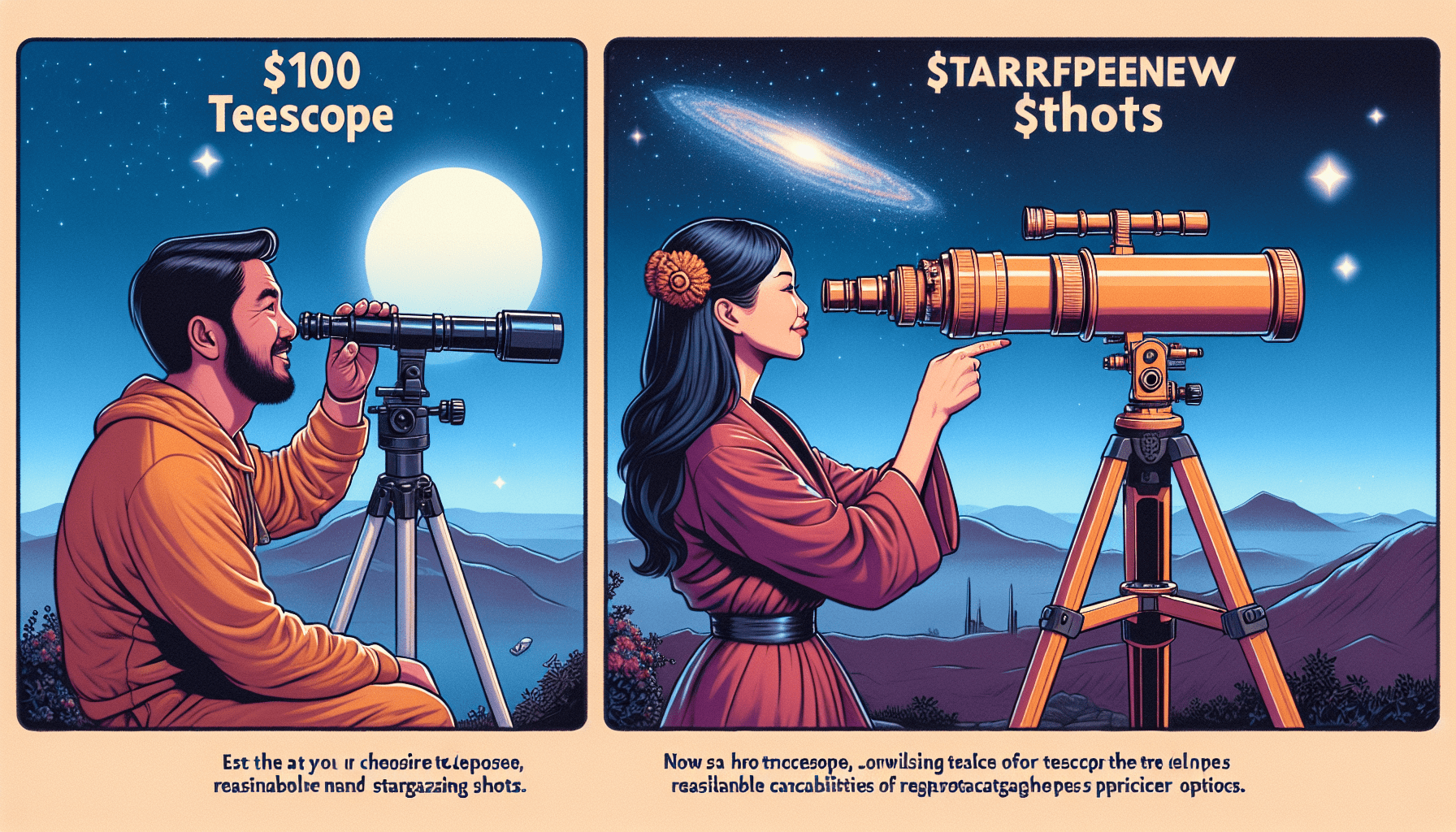
Customer Reviews and Ratings
One effective way to assess the performance and reliability of a $100 dollar telescope is by considering customer reviews and ratings. Online retailers often feature reviews from customers who have purchased and used the product, offering valuable insights and perspectives.
Online Retailer Reviews
Online retailers, such as e-commerce platforms and specialized astronomy equipment websites, commonly allow customers to leave reviews and ratings for the products they purchased. These reviews can provide valuable information about the real-world performance, ease of use, and durability of a $100 dollar telescope. It is important to consider both positive and negative reviews to gain a balanced understanding of the telescope’s strengths and weaknesses.
Astronomy Community Feedback
The astronomy community, consisting of experienced astronomers and enthusiasts, often provides valuable feedback and recommendations on various telescopes. Engaging with online forums, social media groups, or local astronomy clubs can offer insights into the performance and limitations of $100 dollar telescopes from a more experienced perspective. Seeking advice from knowledgeable individuals and participating in discussions can help potential buyers make an informed decision and gain a deeper understanding of what to expect from a telescope in this price range.
Limitations and Trade-offs
While $100 dollar telescopes can provide enjoyable astronomical experiences for beginners, it is important to understand their limitations and trade-offs compared to more expensive models.
Aperture Limitations
One of the primary limitations of $100 dollar telescopes is their smaller aperture size. Due to budget constraints, these telescopes often feature smaller primary lenses or mirrors, limiting their light-gathering capability. This restriction can impact the telescope’s ability to gather enough light to view faint objects or discern fine details. While a $100 dollar telescope may still offer satisfactory views of the Moon, brighter planets, and some deep-sky objects, observers should manage their expectations regarding the level of detail and brightness achievable with these instruments.
Image Quality at High Magnifications
As previously mentioned, $100 dollar telescopes generally have limitations in terms of optical quality and maximum useful magnification. At higher magnification levels, the optical imperfections and limitations become more apparent, resulting in decreased image quality and reduced clarity. Fine details and intricate features on celestial objects may not be as visible or well-defined as they would be with more expensive telescopes. Therefore, observers should be mindful of this potential trade-off when considering a $100 dollar telescope.
Contrast and Light Pollution
Another factor to consider is the impact of contrast and light pollution on the viewing experience. $100 dollar telescopes may possess smaller apertures, making them more prone to the effects of light pollution and reducing contrast between celestial objects and their surroundings. While this can be mitigated to some extent by using appropriate filters and locating darker observing sites, the limitations of $100 dollar telescopes in this regard should be understood. Observers in urban areas with significant light pollution may encounter challenges when attempting to observe faint or subtle objects.
Durability and Longevity
In order to maintain the affordability of $100 dollar telescopes, sacrifices may be made in terms of durability and longevity. The build quality and materials used in these telescopes may not be as robust as those found in higher-end models. Consequently, $100 dollar telescopes may be more susceptible to wear and tear, and their lifespan may be relatively shorter. While this does not imply that they are inherently unreliable or fragile, users should exercise care and consider the long-term expectations when investing in a telescope in this price range.
In conclusion, a $100 dollar telescope can serve as a gateway to the captivating world of astronomy, providing beginners with an introduction to celestial observation. However, it is important to understand the limitations and trade-offs associated with telescopes in this price range. The optical quality, mount stability, accessories, and extras provided by a $100 dollar telescope may not match the performance and capabilities of more expensive models. Considering factors such as lens or mirror quality, mount stability, eyepieces, focusing mechanism, collimation, portability, and additional features can help potential buyers make an informed decision. By managing expectations and understanding the compromises inherent in a $100 dollar telescope, beginners can embark on their astronomical journey with reasonable satisfaction and awe-inspiring experiences.
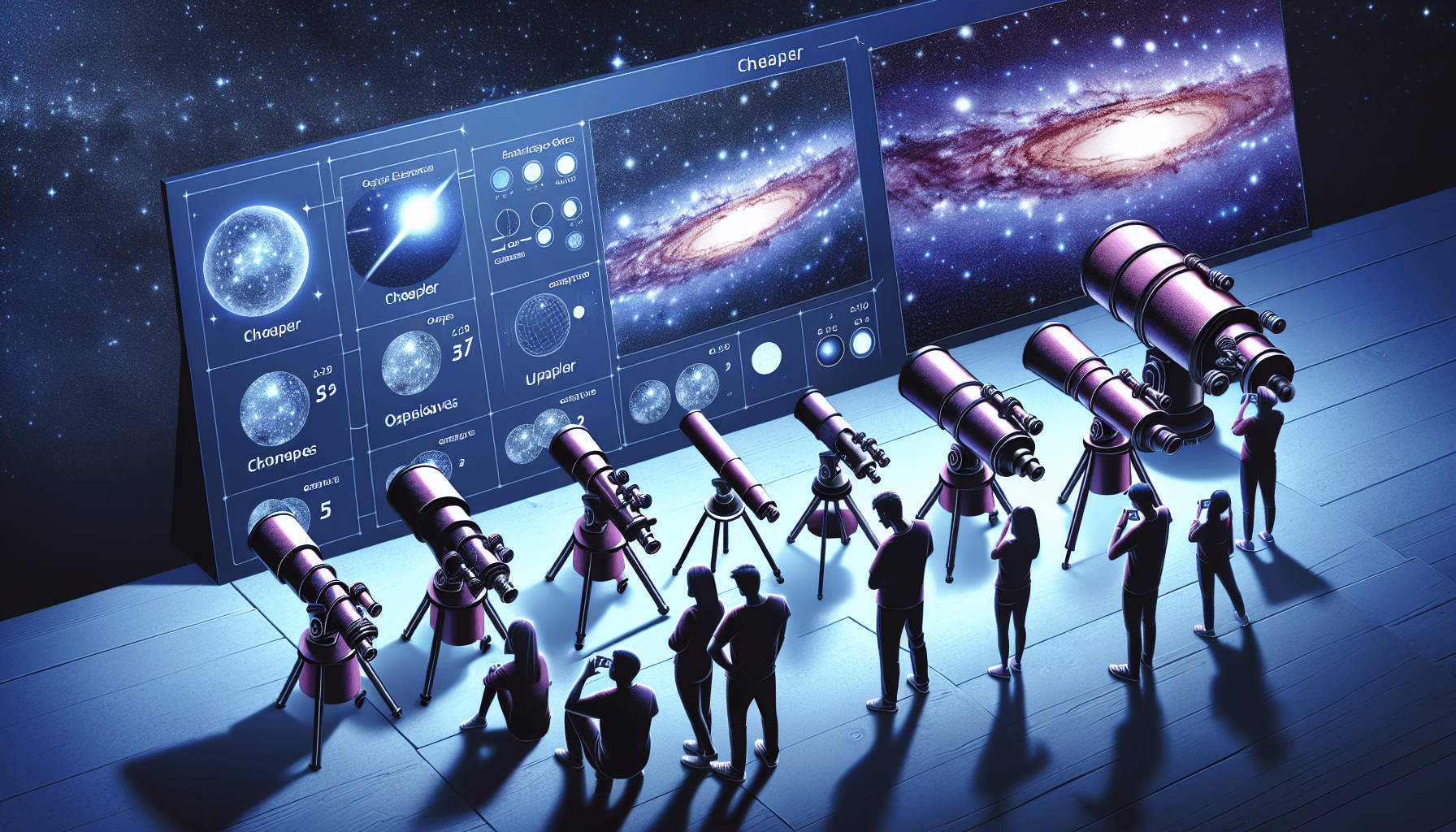
Related site – These beginner telescopes from Celestron are on sale for under $100 at Amazon
